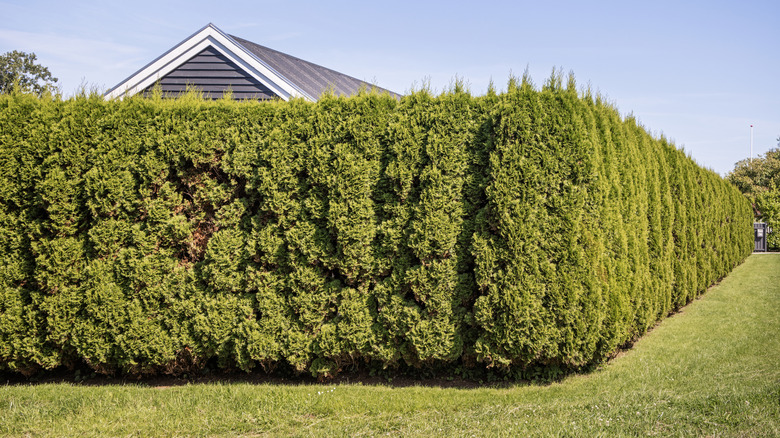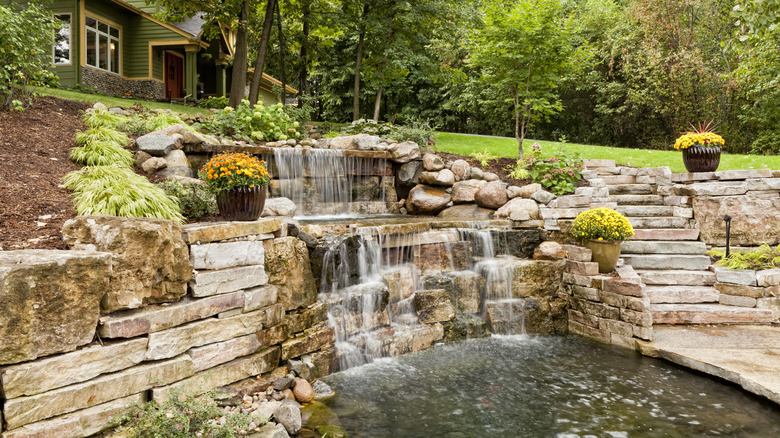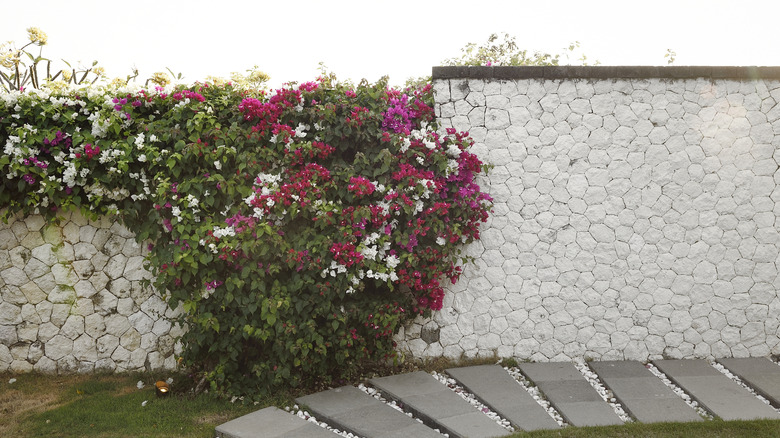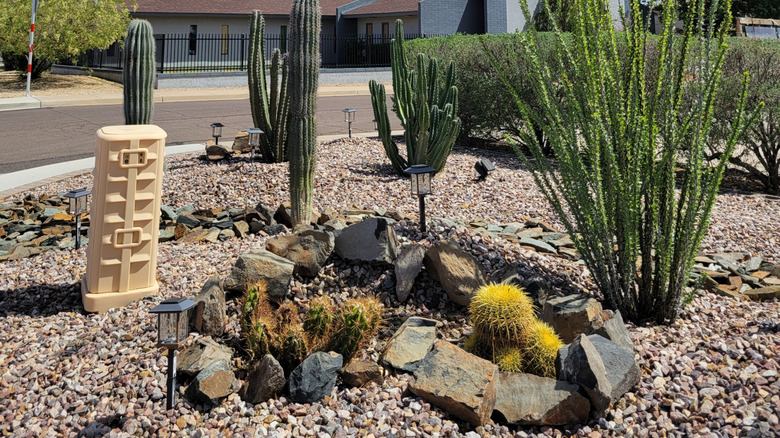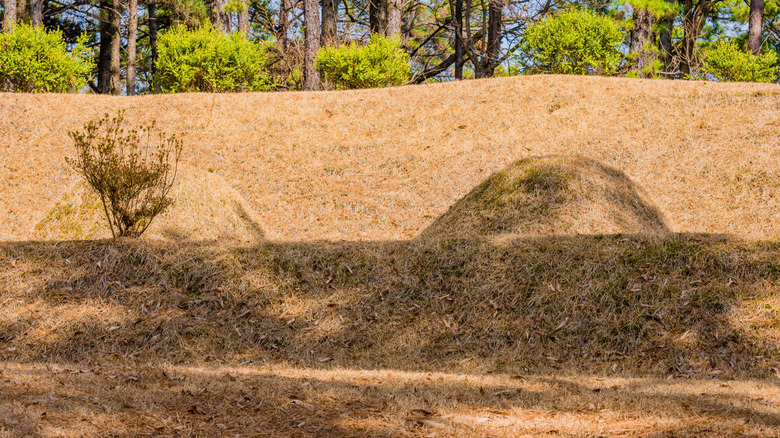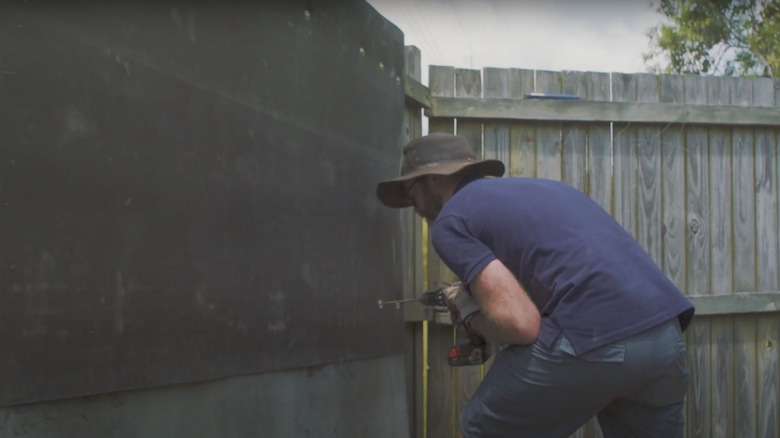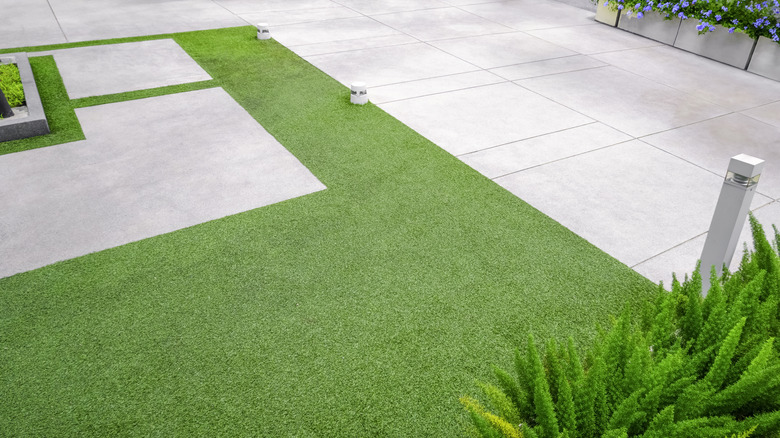Landscaping Ideas That Will Help Minimize Noise While Doing Yardwork
We may receive a commission on purchases made from links.
Yard work can be noisy! If you've got a sprawling yard filled with lush landscaping, chances are your weekends are alive with the hum of hedge trimmers, the roar of lawnmowers, and maybe even the occasional growl of a chainsaw. Maybe it's a lawn that looks like a golf course that demands weekly mowing, or a property edged with trees constantly shedding leaves that need blowing. In any case, you are someone who takes pride in your outdoor space and invests the time and tools to keep it looking its best.
Yet while you're out there tackling the yard work you genuinely enjoy, your neighbors might be hearing more of it than they'd like. If your neighbors are complaining about the noise (or they are just being difficult), it might be time to look into landscaping solutions that don't just enhance your yard but also help reduce the noise associated with all that upkeep. Whether as a courtesy to those around you or simply to create a more peaceful environment for yourself, smart, transformative landscaping ideas like planting an evergreen hedge, installing a water feature, constructing earthen berms, or even building a wall can help minimize the noise while you're hard at work.
Plant an evergreen hedge (or a tree barrier)
If you do a lot of work on your property, planting a substantial hedge can help your neighbors feel less annoyed by all the noise. While this might not be a quick solution, you can certainly lay the groundwork for future success as the greenery grows. Buying mature plants is also an option, but note that transplanting requirements can vary between different tree species. But usually, trees with a trunk less than 10 inches wide and a height of under 25 feet are more likely to survive transplantation.
When planning a hedge, consider a dense planting of evergreen plants to absorb and deflect the noise you generate while caring for the yard. Evergreens like arborvitae, pine, and holly are especially effective year-round — as long as their foliage reaches the ground. Clumping varieties of bamboo can also be useful, but they'll only thrive in shaded spots of the yard. For smaller spaces, consider combining evergreens with a fence or a wall for better results. Remember to always choose evergreen trees or shrubs over their deciduous counterparts, since plants that shed their leaves in winter won't be helpful for half the year. Plus, having fewer fallen leaves on the ground reduces the need for noisy leaf blowing.
Consider a water feature to drown out the noise
If you're looking for a way to turn down the volume on your weekend yard work, a strategically placed water feature can be surprisingly effective. The consistent, natural sound of moving water helps mask the sharper, mechanical noises of lawn tools, and it does so in a way that adds a touch of tranquility to your space. Research suggests that the most effective options are fountains that shoot water upwards in several streams, since their multiple splashes amplify the white noise. Waterfall foundations with a border made of tiny holes that cause water to make a sound as it passes through them also work well. Larger, in-built waterfalls that require the work of a landscape designer are an expensive, but more effective long-term solution, as they generate the most white noise.
Ultimately, no matter your budget, go for a splashy feature with noticeable water movement. Think multi-tiered fountains, waterfalls cascading over rocks (like the SunJet 40.5-Inch High Rocks Outdoor Water Fountain), or even pondless fountains with a high water flow. These designs produce enough ambient noise to help cover the sounds of yard equipment without being jarring. Just keep in mind that exceptionally splashy features can be loud when you're right next to them, so it's wise to place them a little distance from your outdoor living area and closer to the neighbors you want to shield from the work noise. As a courtesy, ask the neighbors whether they're okay with the splashing sounds before installing the feature.
Build a wall
If you have a shorter wooden fence, or a chain link barrier, building something more substantial can help dampen the yard work noise for your neighbors. Keep in mind, however, that while larger walls offer a good way to reduce noise, they're only effective at shorter distances. For example, research on highway noise barriers suggests that the first 50 feet on the other side of the wall experience the greatest amount of noise dampening, with it tapering off until there is no real benefit by a distance of 300 feet from the barrier. In practical terms, this means that your neighbors down the street might be able to hear you mowing, your next-door neighbors will hear less of it — and you'll have some visual privacy to boot.
Before putting up a larger wall, check with your HOA and building authorities to make sure you comply with local regulations, which typically govern the height, width, and materiality of such walls. That said, walls need to be at least 6 feet tall to work, with the sweet spot around 12 to 15 feet. Use concrete or dense brick to block sound waves, as the more weight the material has per square foot, the better it will be at blocking sound. Wood can also work, but it needs to be thick, and there shouldn't be big gaps between the planks. Some homeowners choose to add foliage to their fences, too, for extra sound absorption, as well as a softer overall look.
Xeriscape for less yardwork overall
If your yard requires less work in general, it is going to be quieter overall. The xeriscaping trend at its core is meant to reduce the need for water in a space. As a result, landscapes adhering to this concept don't require much upkeep, meaning that you don't have to take measures to dampen the sounds from your property — less mowing, weedeating, and trimming means less noise overall. While many Americans are obsessed with a lush, green lawn, this option suits desert landscapes and relies on things like rocks and drought-resistant plants instead of labor-intensive greenery. Xeriscaping can work anywhere, but aesthetically, it's most fitting in the southwestern United States.
Converting your lawn to a xeriscaped landscape is a large project, but one with substantial benefits, including a quieter space and a lower water bill. The most common plant choices for this type of yard are cacti and other succulents. There are many different types of cacti and succulents to choose from, and the maintenance they require isn't noisy, as they typically just need a little water and fertilizer. There's no need to prune cacti, and succelents need precious little trimming. You can use other drought-resistant plants, like agave, juniper, and lavender.
Earthen berms can muffle noise and be a unique landscaping feature
If you don't like the look of a tall wall but prefer something denser than a hedge, consider constructing an earthen berm. These are low, raised mounds of soil with multiple uses. Berms not only help block out annoying sounds, but they also add an attractive element to your yard — especially if it's flat. As a benefit, earthen berms are more affordable to construct and maintain than concrete walls.
That said, because of their size, berms need a good deal of space. For these noise barriers to be effective, they should have a width of 3 feet for every foot in height. Given these dimensions, earthen berms work best for bigger properties, where more noise reduction is needed and where adding some visual appeal is a plus. After shaping the berm, planting bushes or decorative grasses on its slope can help block sound more effectively and make the yard look prettier. Since the berm is raised, you can plant in layers, and all the plants will be seen from afar. This makes it a good spot to showcase plants like lavender, fountain grasses, or flowering bushes like a species of native viburnum.
Attach Mass-Loaded Vinyl (MLV) to a fence
Another effective option for dampening the noise coming from your yard is to affix Mass Loaded Vinyl (MLV), like the Soundsulate Mass Loaded Vinyl Soundproofing, to your fence. MLV is a heavy, flexible material commonly used for soundproofing. You can buy weather-resistant MLV, which comes in black rolls that can be unrolled and attached directly onto a fence. To make sure it works like it's supposed to, you should attach fence slats or panels on both sides, with the MLV in the middle. The joints and the perimeter of the MLV sheets should be caulked, too. This installation method makes the fence look nicer and keeps the vinyl safe from weather damage to boot.
While this setup does come with costs, since you'll have to pay for the MLV and added fencing materials, it will still be less expensive than building a masonry wall. It's also a great option for homeowners who want a quieter yard without the unsightly bulk of a concrete barrier. MLV is especially useful if you already have a fence and want to upgrade its noise-dampening qualities or need to match existing fencing styles to comply with HOA guidelines or zoning bylaws. As a bonus, MLV installation is relatively straightforward and DIY friendly.
Opt for grass that requires little mowing — or none at all
Mowing and edging your lawn can be noisy, especially if you have a larger property. If you want to make less noise — and potentially spend fewer hours keeping the lawn's growth in check — invest in a type of grass that doesn't need as much care. You'll have fewer yard maintenance tasks and will generate less noise as a result. For example, fine fescue grasses have deep roots and grow slowly. As cool-season grasses, they're generally grown in the colder parts of the nation. Otherwise, try using a no-mow seed mix, like this American Meadows No-Mow Grass Seeds; as its name suggests, this grass mix will look great even if you leave it unmowed.
For smaller spaces, you can invest in artificial turf instead. While turf is not entirely maintenance-free, it's certainly an easy-care option that requires no noisy upkeep, like mowing. Sure, there are plenty of pros and cons of installing artificial grass on your property, and the upfront costs can be steep — a 500-square-foot space is going to cost over $7,500 thousand to install, on average. However, if noise reduction is your goal, it's a solid option to consider.

